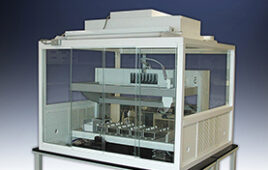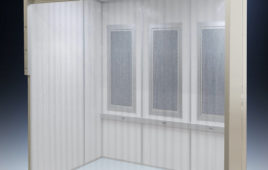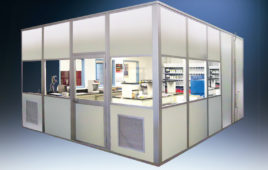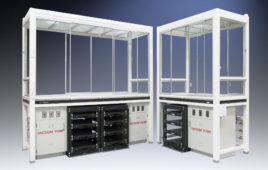
It’s only natural that contamination control in today’s world of critical environments is in a constant state of evolution. After all, the complexities of facilities and processes flow from the increasing intricacies of end products. And throughout the continued development of environmental monitoring programs, it pays dividends to recognize that what works today may not be the best solution for the future.
For example, take the manufacturing of integrated circuits. As interconnected layers multiply while geometries shrink, yesterday’s inconsequential particle may become tomorrow’s killer defect. Medical device and pharmaceutical manufacturing are no different—requirements for enhanced impurity and pathogen elimination continue to grow as technologies become more sophisticated. But even as cleaning protocols change, the consequences of failing to comply remain consistently disastrous.
Wet wiping is a cornerstone of contamination control. A liquid’s ability to penetrate and sanitize the nooks and crannies of a surface—coupled with a process-appropriate sorptive material for absorption—will remain crucial to critical environments across industries.
Alcohol is a lasting standard for wet wiping. While it doesn’t have the broadest kill spectrum or the highest surface penetration, it is a gentle yet effective sanitizer and reliable dissolver of ionic compounds and common organics. Alcohol also evaporates cleanly enough to be used as a residue remover for many other cleaning chemicals. Pairing alcohol—often in a 70% IPA/30% USP purified DI water mixture—with a knitted polyester or polyester-cellulose wipe has been a reliable choice for wide-ranging critical cleaning applications.
But it’s necessary to consider that the process you designed two years ago may not be effective two years from now. If this transpires, will your current supplier be able to meet unanticipated process needs? While it’s important to recognize the potential costs of product evaluation and risks associated with changing suppliers, assessing your supplier’s innovative and evolving capabilities is an equally important consideration.
In the case of IPA sprays, the ability to produce a validated sterile product is critical—but may not be enough. Does your supplier innovate with options such as Water for Injection quality? If your needs become even more specialized, is your supplier capable of making customized IPA sprays? As for wipers, it’s probable that certain processes will need to be improved for labor and material savings without making sacrifices to quality and sterility. How many substrates can your supplier provide in validated sterile, presaturated form? What options for sachet packaging, saturant chemistry, or custom solutions will you be able to access in order to support both your short and long-term requirements?
Asking yourself these questions will help your organization stay in front of regulations while ensuring that processes remain supported. Issues that are of little concern at your site today could be the cause of manufacturing stoppages with a single FDA or EMEA regulation update in the future. So if you plan on producing innovative products, make sure you have access to innovative process solutions.
Essentra plc is a supplier of specialty plastic, fiber, foam, and packaging products. www.essentraporoustechnologies.com
This article appeared in the May 2014 issue of Controlled Environments.




